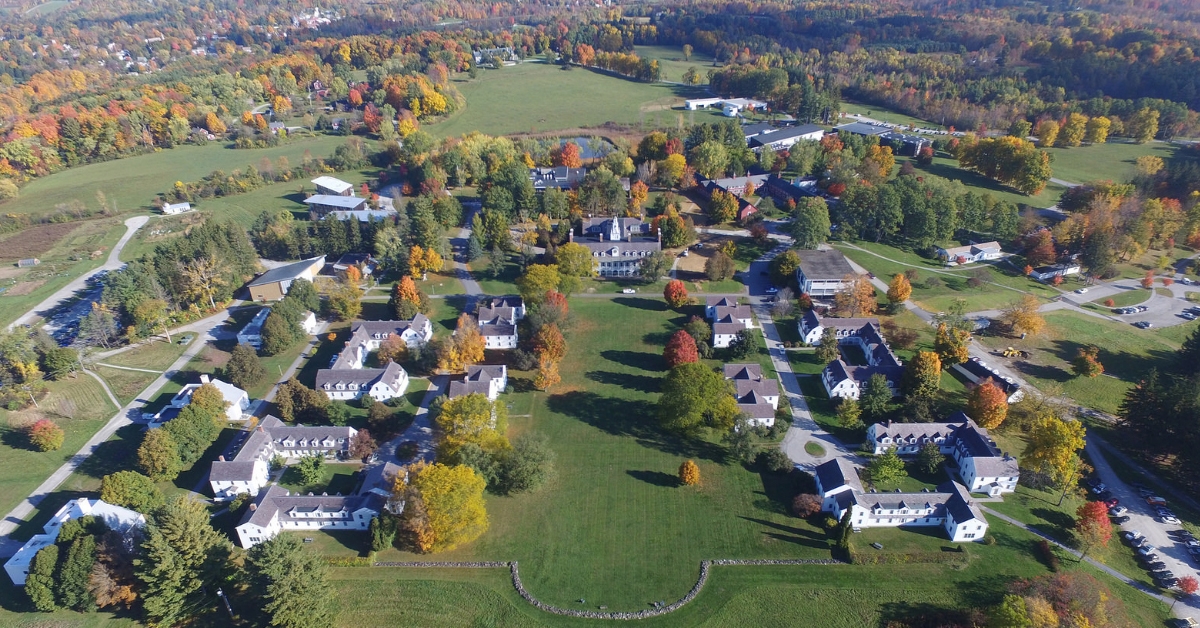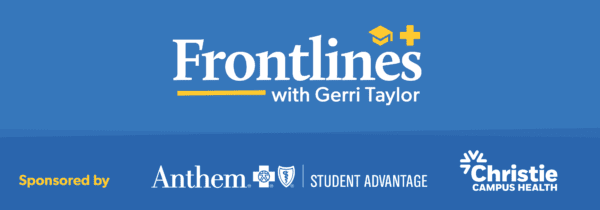
Amelia M. Arria, PhD
The Making Sense of Science column is a partnership with the University of Maryland School of Public Health, Department of Behavioral and Community Health, Center on Young Adult Health and Development.
It’s 8:30 on a Saturday night. It’s your first semester away at college, and you’re still getting the hang of things. Someone on your hall asks what your plans are for the night. You feel excited because you haven’t made many friends yet. This could be your chance! They say they are going “out.” Do you want to join? You say “sure!” way more confidently than you feel. You go through your closet to pick out something to wear. What look am I going for? Will I seem awkward since it’s my first party? What if someone asks me if I want a drink? What do I talk about? How will I get back at the end of the night? You walk into the party with your new hallmates. The music is loud, and you yell to be heard. You don’t know anyone there and yet everyone else seems to know each other. You get out your phone so you’re not just standing there awkwardly. Someone from your group comes back with a drink and hands it to you. You follow them to a beer pong table in the back of the apartment. You’re nervous because you don’t know how to play, but hey, at least it’s something to do…
If this scenario makes you cringe, it could be because it brings back your own memories as a young adult. Certainly, all of us have felt self-conscious as we began to navigate the world on our own. Though these sometimes-painful experiences are not new, today’s students are trying to fit in, navigate a new place, adjust to a different academic environment, and even decide on a career path on top of the uncertain times that we are all living in right now. They might even start to feel as if their day-to-day stress is not valid when they compare it against a global pandemic, systemic injustice, climate change, and many other world events. In this article, we’ll discuss findings about the impact of the pandemic, make sense of the science regarding the connection between social anxiety and alcohol consumption, and provide some suggestions for healthy ways colleges and universities can support students in having in-person interactions with their peers and others without alcohol.
Every generation experiences unique challenges and historical events that shift their worldview. For most of today’s young adults, the pandemic has meant a significant loss of life milestones, social development, and just plain “teenager-hood,” including a year or more of virtual school. Sure, they didn’t have to navigate the awkwardness of the school dance, they didn’t miss their bus and have to find a way home, and they didn’t forget their locker combination and have to ask for help. But that’s just it. Many of those things didn’t happen, so they didn’t have to learn to navigate them. The ubiquitous nature of cell phones and technology have made it easier not to have social interactions in person. On top of that, they were cautioned against social interactions for the better part of two+ years. Social distancing became a household word. Handshakes and hugs were no longer reflexive. Even conversing with a stranger in a grocery line became strained. So, what happens now when college students leave home, and this loss of lived experience is now compounded with the newness of college life?

Kelsey O’ Hara, MPH
As the pandemic shifts to a new phase, college students are feeling a mixture of emotions as they begin their fall semester. On one hand, they are excited to finally experience what they have been anticipating college to be like ever since they began high school—the freedom to meet new people and socialize without the watchful eye of their parents or chaperones. At the same time, the habit of avoiding people, especially in crowded spaces, is hard to break. Some students who are more extroverted might feel the need to make up for lost time, throw caution to the wind, and engage in risky behavior, including excessive drinking. While others who are more anxious might cope with uncomfortable social situations by avoiding them completely or by drinking alcohol to alleviate their discomfort. Spencer-Laitt and colleagues (2022) nicely describe how different types of people responded emotionally to the pandemic. How can we use a science-informed approach to support all students?
Effects of the pandemic: One size did not fit all
Studies show that on average, fewer college students drank excessively during the pandemic (Graupensperger et al., 2021), due in part to restrictions on large social gatherings that were more commonplace in the pre-pandemic world (Jackson et al., 2021). Those averages, however, obscure the experiences of subgroups—some drank more frequently, some drank less, and for others, the pandemic had little impact on their drinking pattern. What accounts for these differences in responses to the pandemic is the focus of current research studies (Kumar et al., 2022). One challenge for colleges is identifying and intervening with the subgroups of students for whom the pandemic might have had a negative impact on their behavioral health. How can colleges support these students to make sure that problematic patterns of substance use don’t escalate to become even more serious? At schools that provide health, counseling, and/or academic assistance services, universal screening could be considered to understand if some students will require some extra attention and help moving forward.
A closer look at social anxiety
There is a difference between having some social anxiety, which the majority of people have, and having social anxiety disorder (SAD), which is estimated to affect about 12% of people (Kessler et al., 2005), although some recent studies indicate increases in the prevalence of social anxiety disorder symptoms, especially among young adults (Jefferies & Ungar, 2020). SAD is characterized by a disproportionate level of fear and anxiety related to being judged or criticized in a social situation so much so that one will experience physical symptoms (e.g., racing heart, feeling hot, having trouble conversing) and they will go to great extent to avoid social situations (Anxiety and Depression Association of America, 2022). One must remember that a certain level of anxiety is a completely normal response to put us on guard in novel situations. Assessing threats in our environment, especially novel environments, is purposeful. But a person with an anxiety disorder believes that the odds of something bad happening is much higher than a person without an anxiety disorder. And the best way to lessen that anxiety is to accumulate experiences and knowledge about the chances of something bad happening.
Exposure to social situations and gaining practice interacting with others is one way to build confidence and lessen social anxiety. Drinking alcohol to cope with social anxiety undermines the chance that a person will learn from the experience and realize that the chance of something bad happening is really small. Why are some extroverts less anxious in social situations? Their natural tendencies not to be as apprehensive is only part of the reason. They also have practiced. They see social situations as challenges, not problems (McCabe et al., 2013). And just like any skill, practice helps you get better. However, when it comes to alcohol consumption or substance use, practice does not make perfect. McCabe et al.’s research (2013) also cautioned that when extroverts seek out the company of friends in stressful situations, they might be likely to engage in excessive drinking.
To be on guard is a prudent strategy when things are unfamiliar. For example, you might not want to be driving around an unfamiliar city. Telling yourself to be calm might not work as well as having a roadmap. You need a plan. Colleges can offer suggestions on what to do in social situations to feel more comfortable, including going with supportive friends, and how to have friendly conversations with new people.
Can alcohol alleviate social anxiety?
While the notion that individuals drink to relieve (or forget) a negative mood state is deeply entrenched in film portrayals of alcohol consumption. The scientific literature paints a more complex picture. Some individuals are more likely than others to “drink-to-cope,” but this behavior is far from universal. Understanding why some individuals are more prone to drinking to alleviate a negative mood state is an active area of scientific inquiry. Scholars have recently suggested that the intensity of emotions rather than whether the emotion is positive or negative is more predictive of alcohol consumption (Tovmasyan et al., 2022). Therefore, identifying individuals who have difficulty regulating the intensity of their emotions and helping them “dial back” the emotion might be a prudent strategy for prevention and early intervention.
Societal messages and alcohol advertising promote alcohol consumption as a positive and almost necessary element of celebrations and social interactions. Research has clearly demonstrated that social motives drive alcohol consumption among college students. Studies have also found that beliefs that alcohol will make you more social, more attractive, and funnier are powerful influences on drinking. In the classic experiment conducted in a “bar lab,” students who were told they were given alcohol, but in actuality received a placebo, reported feeling intoxicated and acted similarly to students who consumed alcohol (Marlatt & Rohsenow, 1981; Washington State Health Care Authority, 2022). These studies and others on alcohol expectancies show the power of these beliefs and underscore that alcohol itself really has very limited power to make one more social and more attractive.
As alcohol consumption increases, judgment is impaired, drowsiness sets in, inhibitions decrease and the chances of doing something that you will regret later increases. Binge drinking (defined as 4+ drinks in a row for females and 5+ for males) increases the likelihood or harming yourself or another person (Centers for Disease Control and Prevention, 2022). So, if social anxiety is making someone fearful of being judged, or saying something silly, choosing to drink might not be the best choice.
Recently, Walukevich-Dienst and colleagues (in press) explored the role of social anxiety as it relates to pre-party drinking, or “pregaming.” Findings reflect the previously mentioned complex pathways that exist between social anxiety and alcohol-related risks. However, the authors found that students with high social anxiety who specifically pregamed to socialize better or to “hook up” experienced more negative consequences and consumed more alcohol. These results emphasize the importance of screening students for behavioral health concerns, which can lead to meaningful conversations that help students connect the dots between feelings, behaviors, and outcomes.
How can colleges provide opportunities for social interaction that do not involve alcohol?
Colleges can destigmatize the issue by creating opportunities for students to discuss social anxiety as a common but not insurmountable aspect of college. Creating an environment that is comfortable and naturally facilitates low-pressure social interaction can help them practice in-person social skills. For many of today’s students, initiating a get together or attending a large or unstructured event can feel scary to navigate. To help students get their foot in the door, hosting events with defined activities that are somewhat passive in nature but that take place in the company of others could be an effective start. Events such as paint nights, movie screenings, hikes, or service projects provide enough structure that students feel like they have a “script” to follow. Campus professionals should always consider the question: “Who is missing?” when planning and evaluating events. Continual reminders of such opportunities through different communication channels are needed to ensure the information reaches everyone. Remembering to design programming for hesitant students might not be as intuitive for those in Student Affairs, many of whom were very involved on campus when they were in college.
Faculty have a critical role to play by incorporating class discussions and group work into the learning environment. They can hold a fun icebreaker at the beginning of class each week. These strategies can help students feel more socially and academically engaged. Class participation and group project performance can be part of a student’s grade. Colleges should be encouraged to create opportunities in the classroom, in career-oriented workshops, and in student-run activities to encourage low-risk social interactions. This strategy also helps students build the critical communication skills that employers say are suboptimal among today’s college graduates (Wilkie, 2019).
Students who choose not to drink and students in recovery might need extra support as they face social pressure from an environment that normalizes alcohol consumption. For example, they might want to attend off-campus social events but feel awkward or judged when turning down a drink. Even students who do occasionally consume alcohol can be faced with invasive questions if they decide not to drink. In these instances, it can be helpful for students to learn communication skills that they can use in these social situations. Colleges can help by setting a tone that students don’t need to drink to have fun, or just to feel comfortable interacting with each other. They can do this by building confidence in more positive ways and providing outlets for students to fully engage with all of what campus life has to offer, without alcohol.
Sponsoring events in residence halls that encourage healthy social interaction might help students practice the skills mentioned earlier. Events don’t have to be marketed as “getting to know you” events, which could intimidate nervous students. For example, RAs could offer to go on a walk around campus as a hall to help students get more familiar with their surroundings. Other possible options include:
- Promoting volunteering. Pro-social drop-in events like meal packing, writing cards for local seniors, or community clean-ups can be great introductions.
- Providing environmental cues. Leave conversation starters on campus dining tables. Maybe even reserve a few tables where students are encouraged to sit if they want to meet new people.
- Creating low-pressure ways for students to check in, provide feedback, and ask questions that don’t require them to raise their hand in a large lecture hall, for example. This could be an online form in their learning platform or a “comment box” that TAs or RAs check regularly.
The overall goal is to create safe spaces to increase a sense of belonging and healthy social interactions that do not involve alcohol. Sending a message that alcohol consumption is a beneficial or necessary component of social interactions can be counterproductive. Building a collective sense of belonging means that people are valued for who they are, and what they contribute to the community. Alcohol consumption should be discouraged as the “glue” for healthy social interactions and as mentioned earlier, underage and excessive drinking can lead to many undesirable consequences (Hingson & Zha, 2009). Furthermore, recent advances in neurodevelopmental science have demonstrated that the earlier young people are exposed to any psychoactive substance, the more likely they will experience problems later in life. As educators, many campus professionals plan programming with specific learning objectives in mind. In these difficult times, we should recognize that although these goals are important, simply creating a space for students to relax and build friendships is in itself a very valuable outcome.
In this article, the focus has been on what colleges can do to create opportunities for healthy social interactions for different types of students. It is important to remember that some students struggle with severe anxiety symptoms that might be indicative of a more serious but treatable condition. Identifying those students and referring them to appropriate resources on- or off-campus is challenging but critical.
Ideally, a whole campus approach, where administrators, faculty, staff, and students make a commitment to the collective wellbeing of all will promote students’ personal growth and professional development. In today’s higher education environment, resources can be scarce, and time is limited. Addressing a near ubiquitous experience like social anxiety, which impacts the goals of all campus stakeholders, is an evidence-based investment worth making.
References
Anxiety and Depression Association of America. (2022). Social Anxiety Disorder. Retrieved September 23 from https://adaa.org/understanding-anxiety/social-anxiety-disorder
Centers for Disease Control and Prevention. (2022). Fact sheet: Binge drinking. Retrieved September 23 from http://www.cdc.gov/alcohol/fact-sheets/binge-drinking.htm
Graupensperger, S., Jaffe, A. E., Fleming, C. N. B., Kilmer, J. R., Lee, C. M., & Larimer, M. E. (2021). Changes in college student alcohol use during the COVID-19 Pandemic: Are perceived drinking norms still relevant? Emerging Adulthood, 9(5), 531-540. https://doi.org/10.1177/2167696820986742
Hingson, R. W., & Zha, W. (2009). Age of drinking onset, alcohol use disorders, frequent heavy drinking, and unintentionally injuring oneself and others after drinking. Pediatrics, 123(6), 1477-1484. https://doi.org/10.1542/peds.2008-2176
Jackson, K. M., Merrill, J. E., Stevens, A. K., Hayes, K. L., & White, H. R. (2021). Changes in alcohol use and drinking context due to the COVID‐19 pandemic: A multimethod study of college student drinkers. Alcoholism: Clinical and Experimental Research, 45(4), 752-764. https://doi.org/10.1111/acer.14574
Jefferies, P., & Ungar, M. (2020). Social anxiety in young people: A prevalence study in seven countries. PLoS One, 15(9), 1-18. https://doi.org/10.1371/journal.pone.0239133
Kessler, R. C., Berglund, P., Demler, O., Jin, R., Merikangas, K. R., & Walters, E. E. (2005). Lifetime prevalence and age-of-onset distributions of DSM-IV disorders in the National Comorbidity Survey Replication. Archives of General Psychiatry, 62(6), 593-602. https://doi.org/10.1001/archpsyc.62.6.593
Kumar, N., Janmohamed, K., Nyhan, K., Martins, S. S., Cerda, M., Hasin, D., Scott, J., Sarpong Frimpong, A., Pates, R., Ghandour, L. A., Wazaify, M., & Khoshnood, K. (2022). Substance, use in relation to COVID-19: A scoping review. Addictive Behaviors, 127, 107213. https://doi.org/10.1016/j.addbeh.2021.107213
Marlatt, G. A., & Rohsenow, D. J. (1981). The think-drink effect. Psychology Today, 15, 60-93.
McCabe, C., Roesch, S., & Aldridge-Gerry, A. (2013). “Have a drink, you’ll feel better.” Predictors of daily alcohol consumption among extraverts: the mediational role of coping. Anxiety, Stress & Coping, 26(2), 121-135.
Spencer-Laitt, D., Eustis, E. H., Barlow, D. H., & Farchione, T. J. (2022). The impact of COVID-19 related social distancing on mental health outcomes: A transdiagnostic account. International Journal Of Environmental Research And Public Health, 19(11). https://doi.org/10.3390/ijerph19116596
Tovmasyan, A., Monk, R. L., & Heim, D. (2022). Towards an affect intensity regulation hypothesis: Systematic review and meta-analyses of the relationship between affective states and alcohol consumption. PLoS One, 17(1), 1-35. https://doi.org/10.1371/journal.pone.0262670
Walukevich-Dienst, K., Blayney, J. A., Fairlie, A. M., Jaffe, A. E., & Larimer, M. E. (in press). Social anxiety and preparty motives are associated with alcohol-related negative consequences during college students’ most recent preparty occasion. Journal of Studies on Alcohol and Drugs. https://doi.org/10.15288/jsad.21-00434
Washington State Health Care Authority. (2022). BAR Lab Experiment. Retrieved September 23 from https://notamomentwasted.org/alcohol/bar-lab-experiment
Wilkie, D. (2019). Employers say students aren’t learning soft skills in college. Retrieved September 23 from https://www.shrm.org/resourcesandtools/hr-topics/employee-relations/pages/employers-say-students-arent-learning-soft-skills-in-college.aspx




